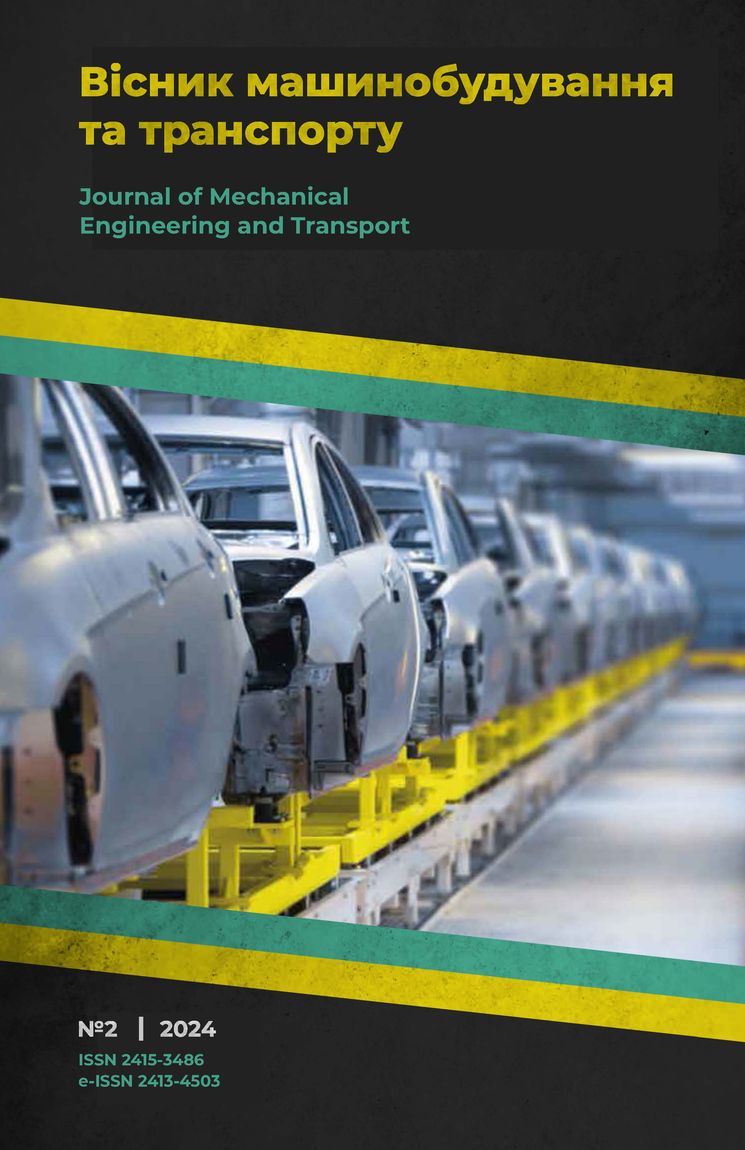Stressed state of a thick-walled pipe under the action of internal pressure and axial force
DOI:
https://doi.org/10.63341/vjmet/2.2024.92Keywords:
thick-walled pipe; uniform pressure; stress state; indicator of the stress stateAbstract
A classical problem of determining the stress state of a thick-walled pipe with fixed bottoms under the action of internal pressure and the axial force generated by it is considered. Under these conditions, the axial strain is zero. The scheme of a perfectly plastic body is accepted. Information Maple technologies for all key stages of solving this problem have been developed. In order to analyse the pipe material for plastic deformation without fracture, the basic differential equation of the problem is formulated and solved with respect to the stress state index, which is equal to the ratio of the first invariant of the stress tensor to the stress intensity. It is shown that the boundary conditions lead to a system of three linear inhomogeneous equations with respect to unknown parameters of the stress equations. It is determined that this system always has a solution, since the determinant of the system matrix is inversely proportional to the square of the radius of the boundary separating the plastic and elastic regions of the pipe and is always different from zero. It is shown that the equation that establishes the relationship between the applied pressure and the radius of the boundary between the plastic and elastic regions cannot be solved directly with respect to an unknown radius. However, it is advisable to use it in a form solved with respect to pressure. The calculated distributions of stress components normalised by the yield strength along the pipe thickness are consistent with the literature data, which confirm that the maximum values of the circumferential load are observed on the outer surface. This is interpreted as a sign of the reliability of the theoretical solution to Bridgman's experimental data, according to which the material fracture of a thick-walled pipe loaded with internal pressure begins from the outer surface. The regularities of changes in the stress state index obtained in this work improve the above justification, since from the standpoint of the theory of deformability of materials during cold deformation, the ultimate deformations of the material usually decrease with the growth of the stress state index, the highest values of which occur at the points of the outer surface
References
Park, S.J., Cerik, B.C., & Choung, J. (2020). Comparative study on ductile fracture prediction of high-tensile strength marine structural steels. Ships and Offshore Structures, 15(sup1), S208-S219. doi: 10.1080/17445302.2020.1743552.
Can Cerik, B., Lee, K., Park, S.-J., & Choung, J. (2019). Simulation of ship collision and grounding damage using Hosford-Coulomb fracture model for shell elements. Ocean Engineering, 173, 415-432. doi: 10.1016/j.oceaneng.2019.01.004.
Can Cerik, B., Ringsberg, J.W., & Choung, J. (2019). Revisiting MARSTRUCT benchmark study on side-shell collision with a combined localized necking and stress-state dependent ductile fracture model. Ocean Engineering, 187, article number 106173. doi: 10.1016/j.oceaneng.2019.106173.
Chenxu, Z., Lei, M., Jinquan, Z., Ruinian, J., & Zhe, J. (2021). Ductile fracture characterization of A36 steel and comparative study of phenomenological models. Journal of Materials in Civil Engineering, 33(1), article number 4020421, doi: 10.1061/ (ASCE)MT.1943-5533.0003543.
Qin, S., & Beese, A.M. (2021). Identification of stress state dependent fracture micromechanisms in DP600 through representative volume element modeling. International Journal of Mechanical Sciences, 194, article number 106209. doi: 10.1016/j.ijmecsci.2020.106209.
Nouira, M., Oliveira, M.C., Khalfallah, A., Alves, J.L., & Menezes, L.F. (2023). Comparative fracture prediction study for two materials under a wide range of stress states using seven uncoupled models. Engineering Fracture Mechanics, 279, article number 108952. doi: 10.1016/j.engfracmech.2022.108952.
Mykhalevych, V.M. (1998). Tensor models of damage accumulation. Vinnytsia: UNIVERSUM-Vinnytsia.
Mykhalevych, V.M., Dobranyuk, Yu.V., & Tyutyunnyk, O.I. (2024). Models of damage accumulation in isotropic materials during cold two-stage deformation. Vinnytsia:VNTU.
Grushko, O.V., Ogorodnikov, V.A., & Slobodyanyuk, Yu.O. (2019). Deformability of low-carbon wire during its multi-stage cold drawing. Bulletin of Vinnytsia Polytechnic Institute, 3, 103-110. doi: 10.31649/1997-9266-2019-144-3-103-110.
Sivak, R.I., Ogorodnikov, V.A., & Arkhipova, T.F. (2022). Nonmonotonic plastic deformation in metal forming processes. Vinnytsia: VNAU.
Matviychuk, V., Mikhalevich, V., & Shtuts, A. (2023). Аnalysis of stress-strain state (sss) of billet material in the course of setting by resource-saving method of roll stamping. Vibrations in Engineering and Technology, 1(108), 63-72. doi: 10.37128/2306-8744-2023-1-7.
Sukhorukov, S.I., Kotsiubivska, K.I., & Syvak, I.O. (2009). Estimation of the deformability of workpieces during transverse wedge rolling. Scientific Notes, 25, 272-275.
Mykhalevych, V.M., Dobranyuk, Yu.V., Tyutyunnyk, O.I., & Kolisnyk, M.A. (2024). Linear and nonlinear models in the theory of damage summation. Materials Working by Pressure: Collection of Scientific Works, 1(53), 100-108. doi: 10.37142/2076- 2151/2024-1(53)100.
Mykhalevych, V., Dobraniuk, Y., Matviichuk, V., Kraievskyi, V., Тiutiunnyk O., Smailova, S., & Kozbakova, A. (2023). A comparative study of various models of equivalent plastic strain to fracture. Informatyka, Automatyka, Pomiary w Gospodarce i Ochronie Środowiska, 13(1), 64-70. doi: 10.35784/iapgos.3496.
Mykhalevych, V.M., & Dobranyuk, Y.V. (2013). Modeling of elastically deformed and limit states of the surface of cylindrical specimens under end compression. Vinnytsia: VNTU.
Mykhalevych, V.M., Dobranyuk, Y.V., & Kraevsky, O.V. (2018). Comparative study of models of limit plastic deformations. Joyrnal of Mechanical Engineering and Transport, 2(8), 56-64.
Mozharovsky, M.S. (2022). Theory of elasticity, plasticity and creep. Kyiv: Vyscha shkola.
Downloads
-
PDF (Українська)
Downloads: 2



